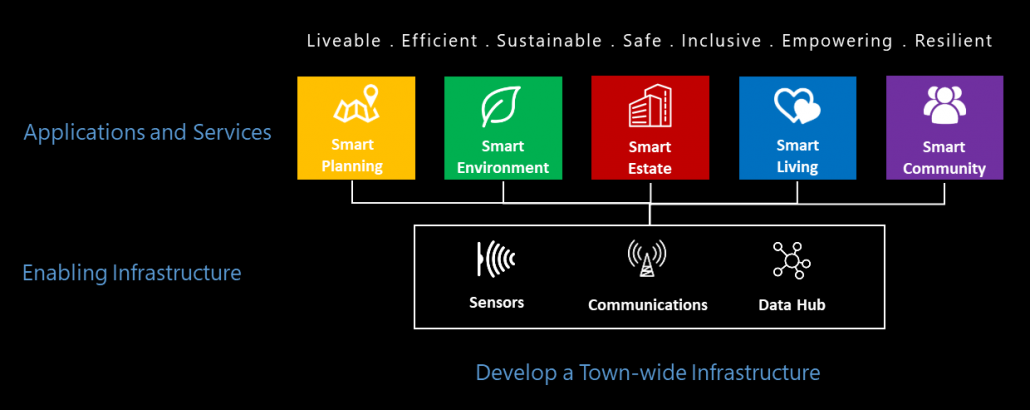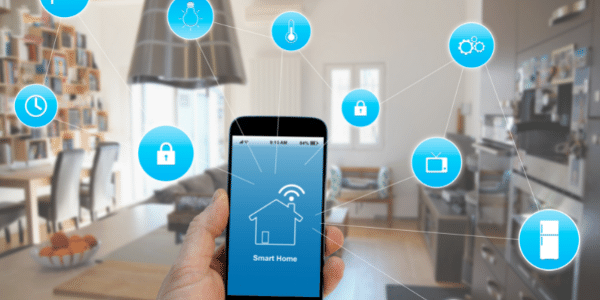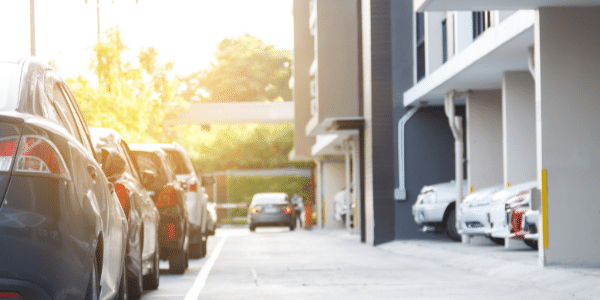In line with the Smart Nation Initiative by enhancing our way of living through technological enhancement and the digital revolution. Therefore, in September 2014, the Housing Development Board (HDB) released the Smart HDB Town Framework to make our HDB smarter and better. You may ask what is this Smart HDB Town Framework? It is actually an initiative to provide HDB residents with a more liveable, sustainable, efficient, and safe living environment by utilizing information communication and sustainable technology.
The Smart HDB Town Framework
In a nutshell, it contains 5 different pillars and below is a brief summary of the framework

Now, I will delve further into each of the 5 pillars and what are they exactly about.
1. Smart Planning
Big data is one of the hottest and most discussed topics in today day and age. Thus, HDB envisions to make use of real-time information, computer simulation and data analytics to construct and design our HDB towns. This is to ensure that the design of our towns will be eco-friendly, cost-effective and optimal. Some common examples of such technologies will be a solar panel, vertical greenery, and rainwater harvesting.

2. Smart Environment
HDB envision to connect all the different HDB towns together through a network of sensors by capturing the real-time environment information such as wind speed and temperature. This would mean in the near future we will be able to see the aircon switching on by itself when the temperature exceeds a certain degree. Therefore, in simple terms, it would mean that technology will be able to control the environment in the future, sounds pretty right?
3. Smart Estate
Well to put it simply, it is like a preventive measure whereby we utilise Smart Technology to resolve future problems and pre-empt potential hazards. Since through technology, we can observe the behavioural patterns of different groups of people and thus allow us to know what preventive measures to put in place to prevent problems from occurring. Such maintenance is crucial to ensure that the problem would not deteriorate.

4. Smart Living
To make it simple, it would mean that your house is filled with technological gadgets and sensors that are able to anticipate human behaviour. HDB hopes to design digital infrastructure in flats to make homes smarter and integrate commercial technology gadgets into their homes. This is in hope that these devices would be able to drive people towards more energy saving behaviour and most importantly decrease energy consumption
5. Smart Community
This helps to better connect the residents living in the community better and forms a strong community bonding. This will enhance the sense of ownership that the residents have with the community in creating a better living environment together through data analytics and Information and Communications Technologies.
Smart HDB Towns
HDB has already introduced a few Smart HDB towns over the years to achieve sustainability goals. Below are a few initiatives.
1. My Smart HDB Home @ Yuhua
Yuhua is the first existing HDB estate to benefit from Smart Home Solutions in the hope to transform Yuhua to a smart and sustainable estate. They have implemented systems such as:
- Utilities management system
This will help residents to adopt an eco-friendly lifestyle for energy and water conservation.
- Elderly monitoring system
This is to ensure the safety of the elderly staying at home without the supervision of caregivers, this is done through motion sensors and provide the caregiver with alerts whenever there is an emergency.

2. Tengah New Town
Tengah is being envisioned to be Singapore’s largest smart, sustainable town, it will feature eco-friendly water and energy features, an automated waste system and software that will aid in the planning of the town. Some examples would be:
- Smart Pneumatic Waste Conveyance System (PWCS)
It uses high-speed air suction to transport household waste via an underground pipe network to the centralised bin centre. This help to reduce the labour intensive approach by having manual waste collection and also helps to resolve problems such as pest manifestation that is created by improper waste management.
- Software for urban planning
An example would be the Urban Microclimate Multi-physics Integrated Simulation (UM-MIST), which will aid in the urban planning of the towns. This is a 3D city model software that stimulates real-life environmental situation and their combined effect on the surrounding urban landscape. Data analytics can be done on the data collected to better plan and design the area to provide better natural ventilation and energy generation.
3. Punggol Northshore
According to HDB, Punggol Northshore is the first district to test-bed smart technologies in public housing. These technologies include:
- Environmental modelling of micro-climatic conditions
Through the monitoring of the climatic conditions in the district, it will further aid in the creating of a more sustainable, green and liveable environment for the residents through better urban planning and design. This would help urban planners know where are the potential hotspot to introduce cooling measures and places suitable for solar panels to be located to achieve the maximum effect.
- Smart Car Park Management System
This will help to ensure that there are sufficient parking lots to cater to the demand of visitors and residents. During non-peak hours, it will be programmed to cater more parking lots for the visitor while during peak hours more lots will be reserved for residents with season parking tickets.

- Smart Fans in the Neighbourhood Centre
It will be equipped with sensors to detect human traffic which will used to control the fans. This helps to decrease energy consumption and regulate the thermal comfort level to ensure that it is comfortable for all.
- Smart Pneumatic Waste Conveyance System
It will be equipped with sensors and the waste disposal patterns of residents there will also be recorded by the district’s waste conveyance system. This data is crucial to help planners better understand how to improve the design of the collection bin and adjust the schedule and frequency of waste and recyclables collection base on the volume of waste collected. With better optimisation of deployment needed for waste collection, unnecessary resources will not be wasted
- Smart Lighting in common areas
To decrease energy consumption, lights in common areas will be equipped with sensors that will detect human traffic flow and adjust the lighting accordingly. If there is no human traffic detected, the lighting will be reduced to 30%, thus potentially able to reduce energy consumption by about 40%.
- Smart Irrigation
To reduce water usage through a less labour-intensive approach in maintaining the greenery and landscape of the area. This is done through moisture sensors and factor in various other conditions that would affect water retention in the soil so as to ensure efficient water usage.

- Smart-Enabled Homes
Additional power and data points will be strategically located in the flat for the installation of smart systems. This will bring about convenience and less energy consumption for residents that use smart devices and applications. One example would be the monitoring system for elderlies which will aid caregivers in knowing their movements and receive alerts whenever there is an emergency.
Conclusion
Singapore has put in much effort to make our city much smarter and sustainable. Other than the smart initiatives that are mentioned above, there are still more to come in the future, since the government has already drawn out trajectories and all Singaporean are going on board this ship to a more sustainable, green and liveable country.
Want to find the best mortgage rate in town? Check out our free comparison service to learn more!
Read more of our posts below!

